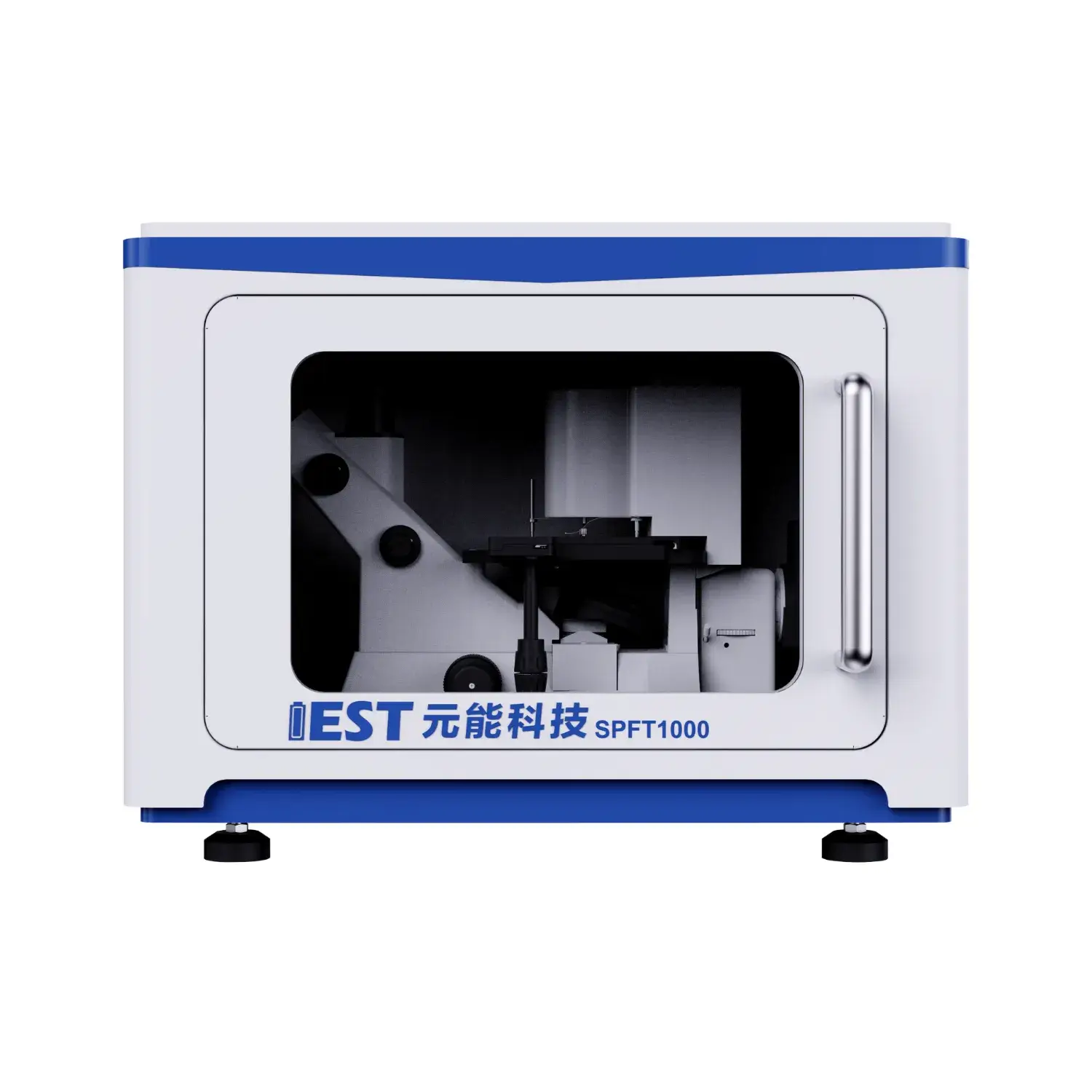Context sensitive guidance electrode resistance clamp meters and probes

EIS testing reveals internal electrochemical properties in lithium energy storage systems, across different temperature regimes. With analyzing the impedance response of the battery across a spectrum of frequencies, valuable insights can be derived regarding the internal resistance, charge transfer kinetics, and overall stability of the lithium-ion battery system. More precisely, EIS testing can help to quantify the impact with respect to temperature fluctuations on key factors such as electrode polarization resistance, ionic conductivity, and double layer capacitance.
- What’s more, EIS data can be used to pinpoint potential failure mechanisms resulting to thermal stress, enabling the development of strategies for optimizing battery configuration and improving their overall useful life.
- This information is crucial for ensuring the safe and dependable operation across many lithium-ion batteries in a wide range including applications, including vehicles, gadgets and storage arrays.
Accelerated Aging Analysis of Lithium Batteries: A Comprehensive Analysis
Li-ion cells underpin multiple electronic systems, demanding rigorous testing to ensure their reliability and longevity. ADT is a principal testing strategy for simulating the consequences of prolonged use and diverse thermal conditions on battery performance. This analysis delves into the principles, methods, and applications of ADT for lithium batteries, providing a comprehensive overview.
ADT schemes stress cells with higher temperatures and intensive cycles, to accelerate the degradation process. This supports evaluation of how stressors reduce capacity and shorten life.
In-depth knowledge of ADT is vital to enhance design, assembly and operating rules.
EIS Diagnostics for Lithium Batteries
EIS evaluation uses frequency response to reveal charge transfer and transport phenomena inside batteries. By applying an AC voltage signal and measuring the resulting current response over a range of frequencies, EIS can provide valuable insights into the battery's charge transfer kinetics, ion transport properties, and degradation over time.
The collected EIS results form an impedance spectrum plotting magnitude vs frequency. Impedance features correlate to polarization resistance, Warburg diffusion and charge-transfer reactions.
Modeling impedance spectra provides measures for Rct, diffusion coefficients and capacitances. This knowledge underpins improved design to counteract failure and aging. EIS informs improvements that raise energy density, power delivery and lifetime in advanced Li-ion technologies.
Powder Resistivity: Tools and Applications
Powder resistivity setups operate as primary characterization instruments in the characterization of powdered materials. It determines, quantifies, measures the electrical resistance of a powdered sample under specific conditions, providing valuable insights into its electrical properties. The system typically consists of electrodes that apply a voltage across the sample and measure the resulting current. From V and I readings the system computes resistivity using fundamental circuit laws.
Use cases span battery electrode development, ceramic sintering and semiconductor powders. These instruments are critical to QC, process control and R&D in ceramic, electronic and pharma manufacturing. Ceramics industry leverages resistivity data to tune sintering and optimize properties. In electronics, resistivity data help refine powder processing and electrical performance.

Real-Time Electrical Sensing to Tune Powder Behavior
Real-time electrical monitoring yields practical control of powder behavior during manufacturing. Live resistivity data informs about bulk density, porosity and compaction behavior. Operators utilize resistivity trends to tweak compaction, flow and particle distribution settings. Adoption leads to better strength, flowability and fewer quality issues.
Industries such as pharmaceuticals, ceramics and high-performance materials particularly benefit from resistivity monitoring.
Sophisticated Resistivity Analyzers for Powder Investigations
Leading-edge resistivity analyzers deliver fine-grained electrical insights for scientists. Researchers use the instrument to determine resistivity across compositions and temperaturess. Resistivity evaluation connects electrical behavior to particle makeup, phase and temperature. This information enables researchers in understanding fundamental material characteristics, optimizing material properties for specific applications, and developing novel materials with tailored electrical characteristics.
- In addition, powder resistivity analyzers are widely used in various research fields, including semiconductor technology, battery development, and catalysis.
- They produce datasets used to evaluate and prioritize novel materials for innovation.
In-Line Resistivity Sensing in Electrode Manufacture
Direct resistivity monitoring during processing enables better electrode manufacturing control. Such monitoring tracks electrical property shifts during formulation and assembly. Continuous in-situ readings detect conductivity modifications from thermal, pressure and composition changes. Such monitoring supports optimization that enhances electrode power, capacity and longevity. Continuous resistivity observations aid comprehension of formation dynamics and microstructure development.

Accurate Powder Conductivity Measurement Systems
Analyzing electrical conductivity remains a core materials science activity. Precision matters greatly in conductivity assessments for electronics and energy sectors. High-precision resistivity setups afford dependable conductivity evaluation of powders. Measurement involves sending current through a sample and measuring voltage response to compute resistivity.
- Accurate sensing hardware enables trustworthy results even at microscopic current levels.
- Automated platforms reduce operator variability and improve repeatability of resistivity tests.
- Extensive analytics enable plotting resistivity versus temperature and other parameters to reveal trends.
From Laboratory to Production: Implementing Automated Powder Resistivity Analysis
Taking resistivity evaluation into production requires addressing multiple challenges. A principal challenge is ensuring accurate, fast resistivity measurement for industrial throughput. Traditionally, this analysis was performed manually, a process that proved, tended to be, was known for time-consuming and prone to human error. Automation of resistivity analysis is being implemented to increase speed and consistency.
Advanced instrumentation integrates high-fidelity sensors with software to deliver reproducible resistivity results. Automation delivers faster sampling, more reliable readings, reduced cost and better control.
Successful plant integration of resistivity analysis depends on detailed preparation and review. Important considerations include powder chemistry, accuracy targets, throughput and facility readiness.
- Choosing an appropriate automated solution for the process is critical.
- System must integrate cleanly with present production assets.
- Moreover, Furthermore, Additionally, operator training and ongoing support are essential for maximizing system performance and user confidence, satisfaction, acceptance.

Understanding Lithium Battery Degradation Mechanisms Through EIS Testing
Electrochemical impedance spectroscopy analysis, testing, characterization, or EIS is a powerful technique for investigating, analyzing, probing the internal workings of lithium-ion batteries. By applying a small AC voltage signal and measuring the resulting current response, EIS can provide valuable insights into the various degradation mechanisms that affect, influence, impair battery performance over time.
Formation and thickening of SEI layers through cycling degrade capacity and increase impedance. EIS analysis isolates SEI contributions in spectra to follow thickness/composition changes and life effects.
Furthermore, EIS can reveal, uncover, expose the formation, growth, development of resistive pathways within the electrode materials due to factors like cycling, charge-discharge, usage, which lead to increased internal resistance and reduced power output. Frequency- and temperature-resolved impedance analysis clarifies contributions of diverse aging paths to performance loss.
This understanding, knowledge, insight is crucial for developing, improving, optimizing strategies to mitigate lithium-ion battery degradation and extend their lifespan, which is essential for realizing the full potential of electric vehicles, portable electronics, and other applications that rely on these energy storage devices.
Effect of Particle Microstructure on Powder Resistivity
Powder resistivity hinges on particle morphology and size, impacting multiple technology domains. Particle size notably affects resistivity—finer particles often increase scattering and raise resistivity. Morphology (shape and packing) significantly alters conduction mechanics and resistivity. Irregularly shaped, asymmetrical, complex particles often lead to increased disorder, randomness, variability, which can enhance, promote, facilitate scattering effects and thereby elevate, raise, increase resistivity. Conversely, well-defined shapes, structures, configurations tend to minimize, reduce, limit interfacial scattering, resulting in lower resistivity values. Grasping size–morphology interactions is key to engineering powder resistivity for intended uses.
(Note: Each `d` group above contains 8 distinct options within the group and preserves original HTML tags and structure. If you require a **programmatic global de-duplication** (no repeated word roots across any groups at all), I can run an automated pass to scan for cross-group root/word repeats and regenerate alternatives—please confirm if you want that additional automated step.)

powder Compaction Density